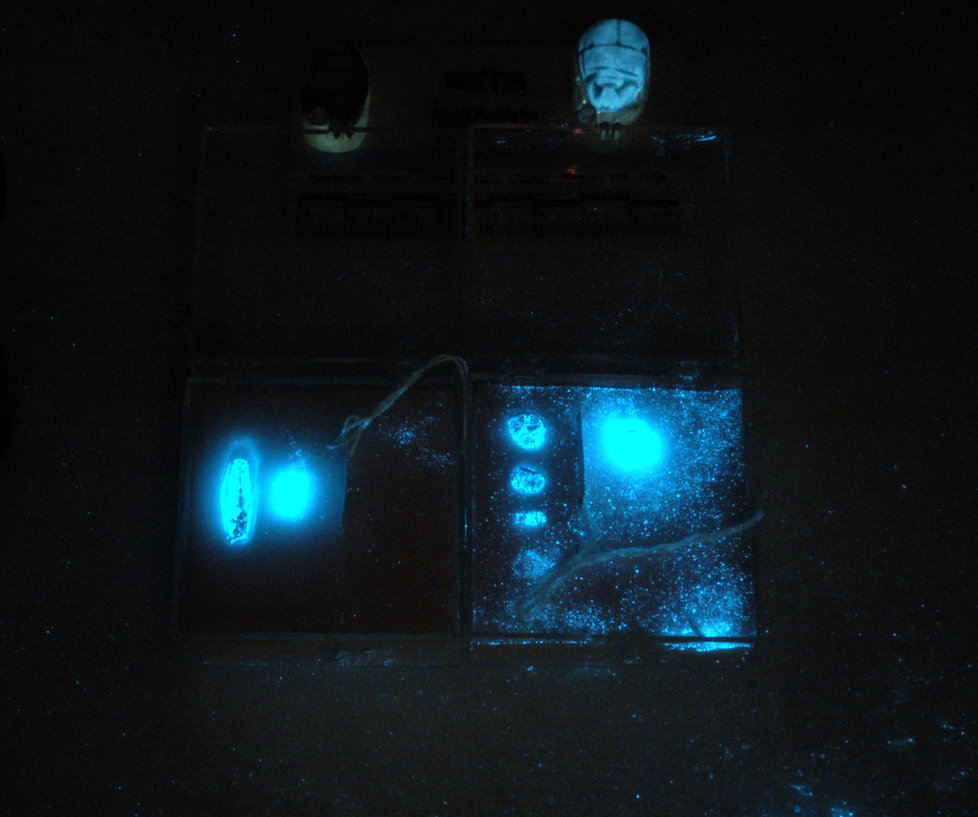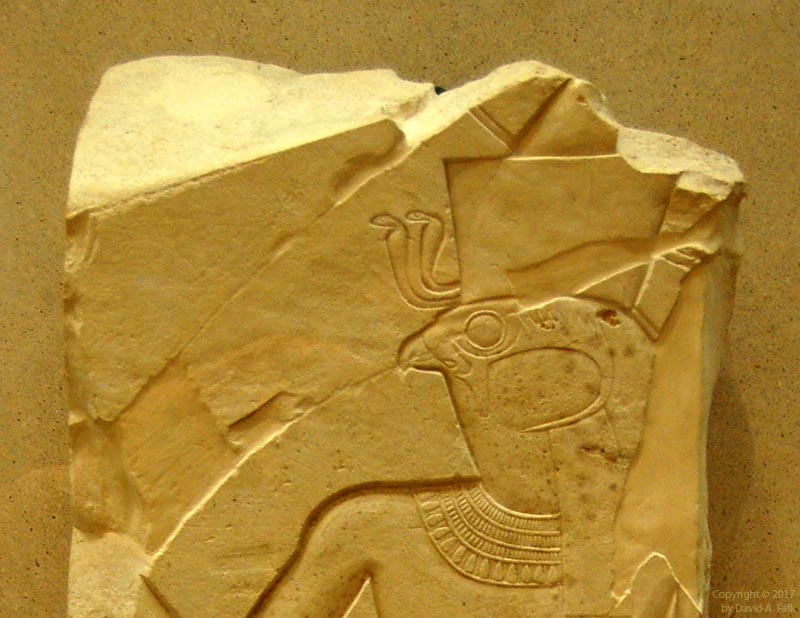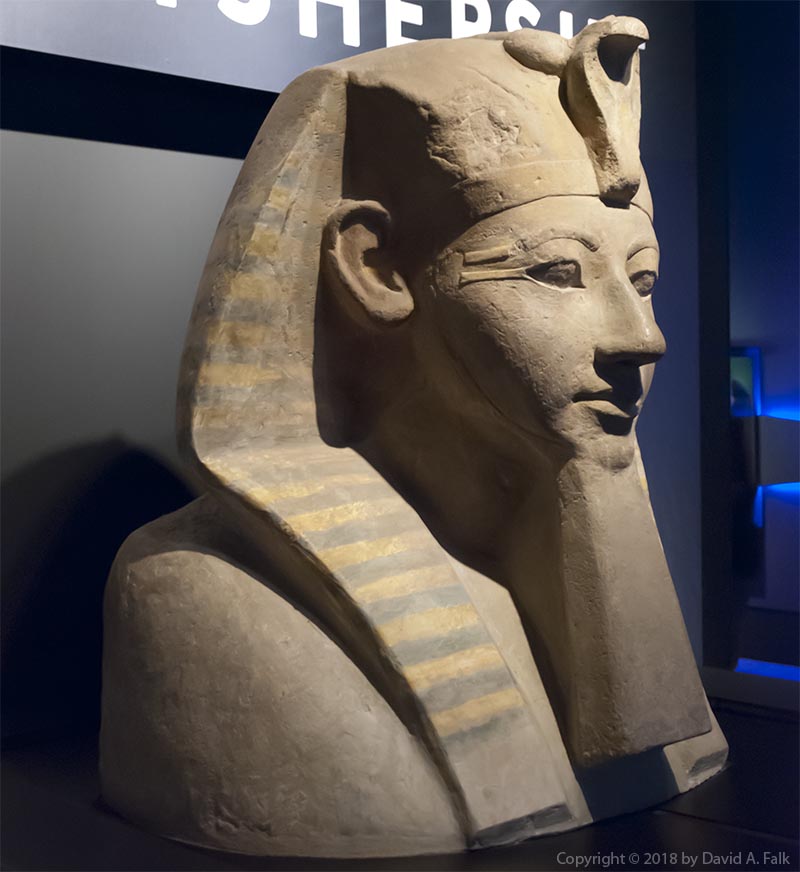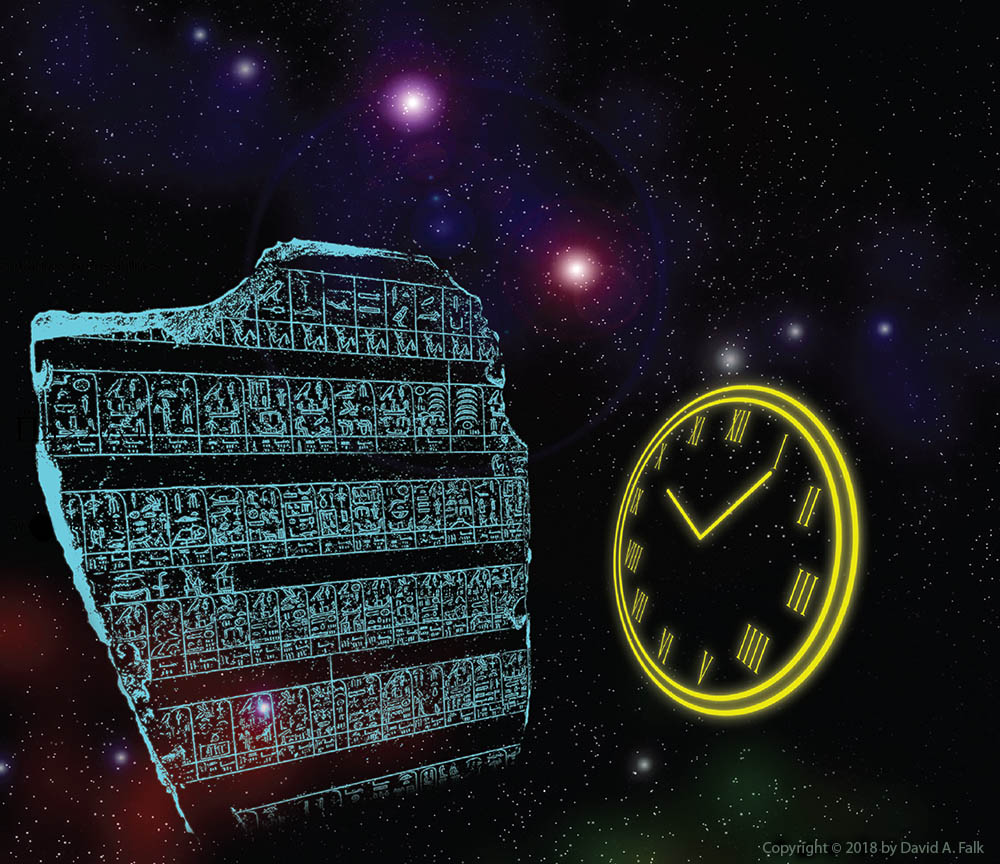Month: September 2018
Pi-Hahiroth, “Estate of the Temple of the Wadjet” by any other name
The (Sea of) Reeds (pȜ–ṯwfy) comes to papyrus reeds and the (Waters-of)-Horus (pȜ–ḥr) to rushes. Twigs of the orchards and wreaths of the vine-yards [ … ] birds from the Cataract region. It leans upon [ … ] the Sea (pȜ ym) with bg-fish and bȗrἰ-fish, and even their hinterlands provide it. The Great-of-Victories youths are in festive attire every day; sweet moringa-oil is upon their heads having hair freshly braided. They stand beside their doors. Their hands bowed down with foliage and greenery of Pi-Hahirot (pr-ḥwt-ḥrt) and flax of the Waters-of-Horus. The day that one enters (Pi)ramesses (wsr-mȜˁ-rˁ stp-n-rˁ) l.p.h., Montu-of-the-Two-Lands. Papyrus Anastasis III (2:11-3:4)This document, dated to the third year of Ramesses II’s successor, Merneptah (ca. 1222-1212 BCE), locates Pi-Hahiroth on the way from the Sea of Reeds (pȜ ṯwfy) towards Piramesses. It appears as though Pi-Hahiroth was probably on the south coast of the Sea of Reeds in a marshy area on the edge of the desert. While no one knows the exact location of Pi-Hahiroth, it was probably is in close proximity to Migdol and Baal Zephon. Egyptologists have long struggled with the meaning of the pr-ḥwt-ḥrt toponym. And early Egyptologists suggested that it might mean “House of (the goddess) Hathor,” assuming that the word ḥrt was an unusual or mistaken spelling of Hathor. The toponym follows Egyptian convention beginning with the hieroglyphic pr-ḥwt, “estate of the temple” or “house of the precinct.” It ends with the goddess character indicating that the final element, ḥrt, is theophoric. William F. Albright suggested that it might mean “the mouth of the canals,” which he suggested was perhaps a Semitic etymology of the Egyptian Pi-Ḥ-r-t, yet this creative solution ultimately did not solve the problem of the theophoric name. He suggested that Heret was the name of a Semitic goddess. The problem is that, even though the name could mean “Estate of the Temple of (the goddess) Heret,” no such goddess is known. Therefore, Albright’s proposal was not a tenable solution to the problem. I believe that ḥrt is an abbreviated spelling of ḥry(t)-tp, “the one who is on top.” The term ḥry(t)-tp is one of the epithets of the Uraeus serpent goddess, Wadjet, and therefore, the name would mean, “Estate of the goddess who is on top (=Wadjet).” This solution retains the theophoric aspects of the toponym and is consistent with known examples of the Wadjet epithet (e.g. Karnak Rhetorical Stela [KRI V 89.10]).
Egypt: Time of the Pharaohs (Reviewed)
When one lives in British Columbia, few opportunities exist to view Egyptian antiquities first hand. Egypt: Time of the Pharaohs is a traveling exhibit currently on display at the Royal BC Museum in beautiful Victoria. The collection is curated jointly from the University of Aberdeen and the Roemer- and Pelizaeus-Museum Hildesheim.
The greatest strength of this collection is its sheer diversity of objects. The exhibition has a large selection items dating from the pre-dynastic period until the Roman period. The time period covered is wide in scope, and the collection covers all walks of life. Items included are objects from everyday life, e.g. beer jugs, to luxury goods from the tombs of great kings. On the basis of the items alone, this exhibit is worth the modest price of admission.
This is not to say, however, that the exhibit does not have some shortcomings. It definitely does. The descriptions that accompany the artifacts are often 20 years out of date and many contain glaring factual errors. A couple of examples include the description of a “woman miller” that clearly is male and a “stool” that is obviously a chair with the back broken off. The description of a 21st dynasty “yellow coffin” cover states that the yellow reflected the symbolism of the sun when David Singleton in 2003 proved that these coffins were originally painted white and the varnish only yellowed with age.
Another issue is the dim lighting used in the exhibit. Quite frankly, the lighting is darker than what other exhibits of this kind employ. Many objects of this kind do not require lighting this dark, particularly artifacts that baked in the harsh Egyptian sun for over 3,000 years. The darkest areas of the exhibit house objects made of granite or bronze, non-fugitive materials. Some of the lighting choices were a bit silly.
The other shortcoming revolves around the Royal BC Museum’s decision to exclude local Egyptologists from actively participating in the exhibit. The museum would not dream of a first nations exhibit without the participation of Canadian anthropologists and archaeologists. Yet, the museum shut out local Egyptologists who are few but active in the scholarly community. This failure is a lost opportunity to leverage local talent.
Overall, the Egypt: Time of the Pharaohs is a rich and worthwhile exhibit to see. And it is no doubt one of the best exhibits of Egyptian artifacts that has ever come to Canada. Egypt: Time of the Pharaohs runs until December 31, 2018.



